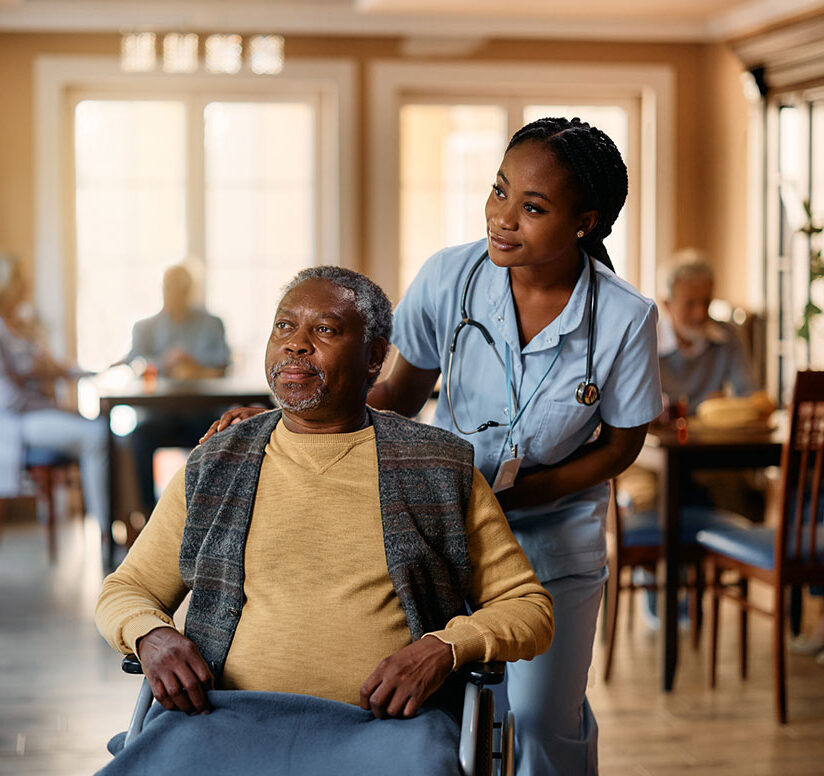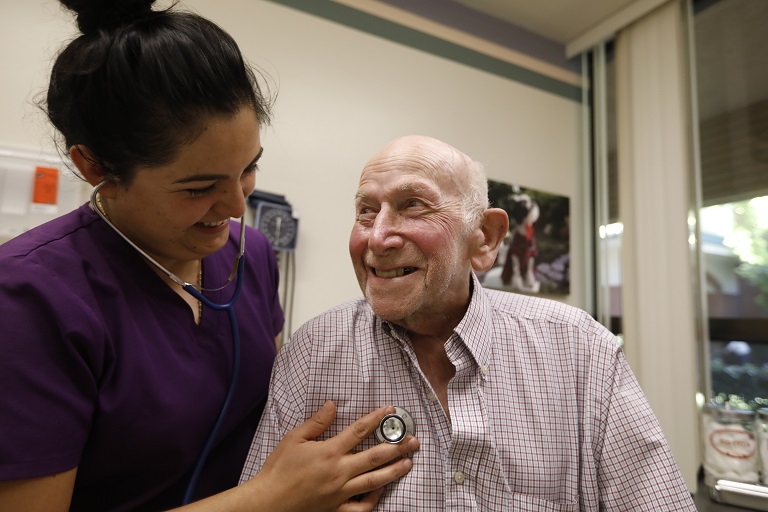Interview with Dr. Jerome Adams, U.S. Surgeon General
U.S. Surgeon General, Dr. Jerome Adams, joined the LeadingAge Coronavirus Update Call on January 4, 2021. He responded to questions from Ruth Katz and from callers.
(Listen to the interview here.)
Q: Please tell us about vaccine supply. When will more doses of the current vaccines be available and what new vaccines in the pipeline might be ready soon?
A: Less than a year after sequencing the genes of this new virus, we have two vaccines that have received Emergency Use Authorization (EUA). The Astra Zeneca has been approved in the U.K. and Astra Zeneca may apply for EUA here by the end of January. The Johnson and Johnson vaccine also seems promising. We are projecting that there will be 50 million doses of vaccine (Pfizer and Moderna) by the end of January and 100 million doses by the end of February. If additional vaccines are approved (and once data is submitted for EUA, HHS turns the review around very quickly), that will increase the supply. But we need to turn vaccines into vaccinations. That will not occur quickly enough for those people who are getting sick and dying in the meantime. However, we are now vaccinating people and that is a sign of hope.
Q: Will we soon have one dose vaccines?
A: The Johnson and Johnson vaccine is one dose and we hope to see that come across the finish line soon. But we don’t yet know if it will be as effective as the two dose vaccines. We will need to continue to work on who should get which vaccine, but the advice at this point is – take whatever you can get. And, for the Pfizer and Moderna vaccines, the U.S. is not considering administering only one of the two doses, as has begun in other countries. However, we are exploring whether smaller dosages might be effective, thus extending the vaccine supply.
Q: Will regular adults be able to be vaccinated by summer?
A: Yes, and I don’t think that is overly optimistic. I am hopeful that in February we should be able to move past this first phase, to vaccinate other vulnerable people and essential workers. We should then be able to start vaccinating less vulnerable people by April.
Q: Part of the challenge with state and local partnership strategies is that each state is different. Are there states where vaccination rollout is working better?
A: This is the hardest vaccination effort in history. We do 100 million flu vaccinations each year and we will use our tried and true partners for this effort as well. Several states are reporting that they have administered 50-60% of the doses that have been delivered to date – SD, ND CT, ME, and DC. This vaccination if federally supported, state led and locally delivered.
Q: Many of our members are participating in the Pharmacy Partnership. We are hearing that vaccine acceptance by staff is currently only around 50%. What can we do about that?
A: We need to understand that there are disparities in all of our vaccination tiers. The people with disproportionately severe effects from COVID-19 are also those most concerned about receiving the vaccine. There are real historical and current reasons for their distrust. We must acknowledge those and sit down one on one to explain the protections that are in place. People need to know about independent Institutional Review Boards, that Dr. Kizzmekia Corbetter helped lead the development of the vaccine, and that African American and other people of color have been part of the clinical trials. It is important to acknowledge the concerns, provide information and to lead by example. Discussions should be tailored to specific people and communities and we need to engage trusted influencers in each community.
Q: What is your sense of the scale of a likely post-holiday surge and what might that mean for aging services providers?
A: It will take us another 2-3 weeks to get to understand the scope of this surge, because it takes time for cases to emerge and then more weeks to see hospitalizations and deaths. We have to remain vigilant and cautious. People who gathered for the holidays should quarantine and get tested 3-5 days after. The numbers are likely to decline after January but we need to be very cautious now.
Q: Can you receive the first shot with one vaccine and then get second with a different vaccine?
A: No, it is important to use the same vaccine for both doses as these vaccines differ from one another.
Q: What about children?
A: Trials are now underway that include children and also pregnant women, so we should have more information soon. The hope is that a vaccine approved for children would be available by summer and children would be protected in time to go to school in the fall.
Q: What will be needed to get back to some degree of “normal”?
A: We don’t know exactly, but Dr. Fauci says we will need 80-90% to achieve herd immunity. Not everyone who can be vaccinated wants to be vaccinated. We would like to vaccinate 200 million adults, but realistically it will be more like 125 million. There are three reasons to get vaccinated: 1) to protect yourself; 2) to protect the people around you; and 3) to move toward herd immunity/ community immunity. We can begin to achieve immunity in smaller groups. For example, we are trying to achieve herd immunity in the nursing home community.
Q: Can you still get sick from COVID after you get the vaccine?
A: The vaccine makes it so you have a 95% diminished chance of becoming infected when exposed to the virus. And, experts believe that getting a COVID-19 vaccine may also keep you from getting seriously ill, even if you do get COVID-19. However, studies are still being conducted to learn more about the effect of COVID-19 vaccination on the severity of illness, as well as its ability to keep people from spreading the virus. That is why it is important for everyone, including people who have had COVID-19 and people who have been vaccinated, to continue to take all precautions.
In closing, please remain vigilant but have hope and keep taking protective measures.

Most Recommended
October 15, 2025
 Shutdown Week Three: Impact of Ongoing Closure on Affordable Housing
Shutdown Week Three: Impact of Ongoing Closure on Affordable Housing
December 10, 2025
Fiscal Year (FY) Funding 2026
October 07, 2025
Immigrant Workforce Matching Program Brings Workforce Relief
Recently Added
December 19, 2025
House Moves Forward on Affordable Housing Reforms
December 19, 2025
White House Cannabis EO Paves Way for Research, Access
December 19, 2025
LeadingAge Urges DHS to Maintain "Public Charge" Guardrails
December 18, 2025



